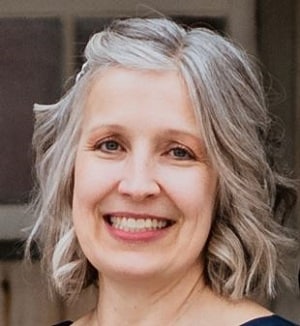Are Your Leadership Blind Spots Holding You (and Your Team) Back? with Lynn Townsend
October 9, 2024She walked into the dingy office with her everyday attitude. “Sara Simpson” (not her real name) was tired, grumpy, and ready to be the smartest person in every room that Thursday.
Sara managed a small continuous improvement department at a large industrial company. She worked long hours and wanted applause as a valuable individual contributor. Her job satisfaction often came when she could outsmart a co-worker, a customer, or a vendor.
Yes, Sara was a smart cookie. She not only had insider industry experience but also a knack for building better processes. In addition, Sara could offer a handful of solutions for most topics—business and otherwise—at a moment’s notice.
Despite her experience and abilities, Sara had blind spots that impacted her professional success. According to the Inc. article The Top 10 Leadership Blind Spots by Marissa Levin, and the Great Manager Institute, a performance development company, a leader’s blind spots can fall into several categories. Here are five common ones:
1) fostering candid communication,
2) caring well for others,
3) setting clear expectations,
4) involving colleagues in decisions, and
5) being reliable.
One of Sara’s blind spots is communication. She often digs her heels into her point of view. She then fights long and hard to win the verbal battle instead of seeing the other person’s perspective. Once, during a department meeting, another manager, Carrie, shared the top three product defects for the year. Carrie then wanted to brainstorm solutions to fix the defects. Sara instantly gave the solutions to the team. The verbal war began when Carrie pushed back on one of Sara’s solutions.
Sara also has two other blind spots: wavering in reliability and making impulsive decisions without involving her team. When Sara feels overwhelmed by her workload, she often imposes her worries and limitations on others. For example, Jackson came to her with a project update. He said he was on track to finish the report in two weeks. He proudly said he could meet the original deadline. Sara responded to Jackson through a lens of personal pressure – she couldn’t imagine herself achieving Jackson’s project deadline, so she asked him to push out the project for two more weeks.
Sara’s not alone in her blind spots. Korn-Ferry International, an organizational management consultancy, found that 80% of leaders have at least one blind spot that hampers their effectiveness.
What could Sara do to understand her blind spots? How could she intentionally overcome those blind spots? Here are three tools that could help Sara (and us) see more clearly.
Tool 1: Complete a Professional Profile
As an individual awareness activity and team building exercise, complete a Clifton Strengths assessment. The results will give each team member a picture of their top ten strengths and a vocabulary to communicate these strengths to the rest of the team. Then the highs and lows of these talent themes, balconies – when a strength is balanced, and basements – when a strength is unbalanced – will help identify blind spots.
Tool 2: Ask Better Questions
Questions can help define each team member’s personal and professional goals. These goals will provide insights into their work approach, aspirations at work and beyond, and help to tie work outcomes to their professional endeavors. Consider these starter questions:
1) What are your work aspirations?
2) What’s your ideal day?
3) How do you do your best work – individually, collaboratively, or both?
4) How can I support your success?
5) What’s one thing I do as your leader that might hinder your success? Share an example.
Tool 3: Hire a Coach
Leadership coaches can be a fantastic resource for uncovering blind spots. Interview three to five coaches to determine the right fit and chemistry. Commit to twelve months of monthly connections. Collaborate with the coach to develop improvement goals. Ask the coach to help identify blind spots.
Fast-forward two years of Thursdays: Sara is using strength vocabulary to assign tasks and build a stronger team. She is asking better and more questions. And Sara is leveraging her leadership coach’s guidance to help her keep off her blinders.

About the Author: Lynn Townsend is a general business practitioner at Town’s End Communications, LLC. She collaborates with leaders to develop individual and team training and wellness programs, build and improve customer journeys, audit and support culture excellence, and stay aligned with their mission, vision, and values. Contact Lynn at lmtt9398@gmail.com.